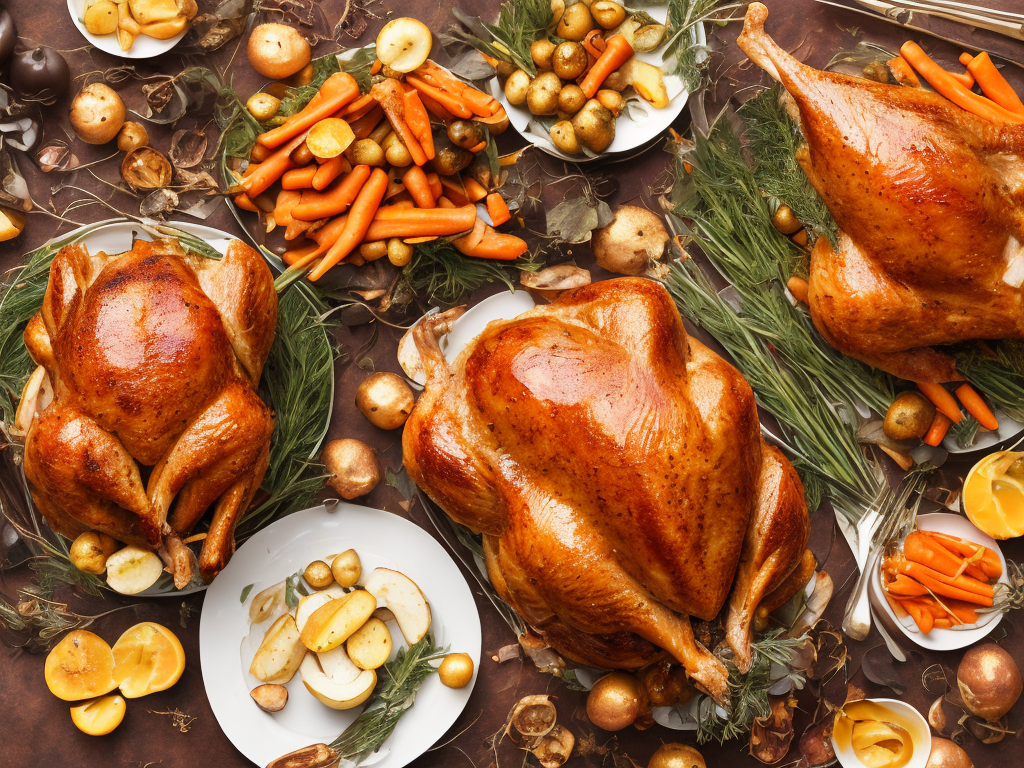
How To Cook Turkey: A Step-by-Step Guide
Cooking the perfect turkey can be a daunting task, especially if you're doing it for the first time. However, with the right techniques and some simple steps to follow, you can achieve a delicious and moist turkey that will be the centerpiece of your holiday feast. In this article, we will provide a comprehensive guide on how to cook turkey, from preparation to carving.
Preparation:
Before you begin cooking your turkey, it's essential to plan ahead and ensure you have all the necessary ingredients and equipment. Here's a handy checklist:
1. Turkey: Choose a turkey size according to the number of guests you will be serving. A general guideline is to estimate around 1 pound (0.45 kg) of turkey per person.
2. Thawing: If you have a frozen turkey, make sure to thaw it in the refrigerator for approximately 24 hours for every 4-5 pounds (1.8-2.3 kg) of turkey. Always refer to the manufacturer's instructions for thawing recommendations.
3. Seasoning: Gather your preferred seasonings, such as salt, pepper, herbs (rosemary, thyme, sage), and garlic. You can also prepare a flavored butter mixture by combining softened butter with herbs and spices.
4. Stuffing: Determine whether you want to stuff your turkey or cook the stuffing separately. If you choose to stuff, make sure to prepare the stuffing mixture ahead of time and follow appropriate food safety guidelines.
5. Roasting Pan: Ensure you have a roasting pan that is large enough to hold your turkey, along with a roasting rack to elevate it.
6. Thermometer: Invest in a meat thermometer to ensure your turkey is cooked to the proper temperature. The turkey should reach an internal temperature of 165°F (74°C) for both the breast and the thigh.
Now that you've gathered all the necessary ingredients and equipment, let's move on to the cooking process.
Cooking Process:
1. Preheat the oven: Begin by preheating your oven to 325°F (163°C). Preheating is crucial for even cooking.
2. Season the turkey: Pat the turkey dry with paper towels to remove any excess moisture. Season the bird generously with salt and pepper, both inside and out. If desired, add herbs or rub flavored butter under the skin for added moisture and flavor.
3. Trussing: While trussing your turkey (tying the legs together with kitchen twine) is optional, it can help the bird cook more evenly and maintain a compact shape. Truss the legs by crossing them and securing them with twine.
4. Place the turkey in the roasting pan: Set a roasting rack inside the pan and place the turkey on top, breast-side up. The rack helps elevate the bird, allowing hot air to circulate, resulting in crispy skin all around.
5. Cooking time: Estimate the cooking time based on the weight of your turkey. A general rule is to cook the turkey for about 13 minutes per pound (30 minutes per kg). However, this is just an estimate, and having a meat thermometer is crucial to determine doneness accurately.
6. Basting: Basting the turkey periodically during cooking helps to keep it moist. You can use the natural juices in the pan or a basting liquid of your choice. As a general guideline, baste every 30-45 minutes, being quick to avoid extended heat loss from the oven.
7. Monitor the internal temperature: As the cooking time progresses, it's important to monitor the internal temperature of the turkey using a meat thermometer. Insert the thermometer into the thickest part of the thigh, without touching the bone. Ensure the thermometer is properly calibrated and reaches a temperature of 165°F (74°C) for both the breast and the thigh.
8. Resting: Once the turkey has reached the desired internal temperature, remove it from the oven and let it rest. Cover the turkey loosely with aluminum foil and let it rest for at least 20-30 minutes. Resting allows the juices to redistribute within the bird, resulting in a moist and flavorful turkey.
9. Carving: When you're ready to serve, carve the turkey. Start by removing the twine used for trussing. Then, carefully slice the breast meat against the grain, aiming for thin and even slices. Separate the legs and thighs by using a carving knife and serving fork. Serve the turkey on a platter and garnish according to your preference.
By following these steps, you can confidently cook a delightful turkey that will leave your guests impressed. Remember, cooking a turkey can take some time and practice, so don't be discouraged if your first attempt isn't perfect. With each cooking experience, you'll gain valuable knowledge and continue improving your skills. Enjoy the process, and savor the delicious rewards of your efforts!
 Self-Instruct
Self-Instruct